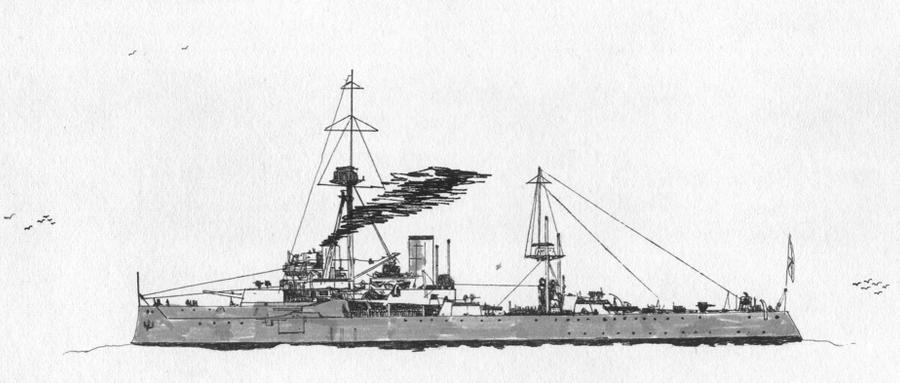British HMS Dreadnought
USS Texas
USN New York-class
The American Secretary of Navy Meyer wasn’t satisfied with the 28,000 tons battleships (2) for which he requested in his naval shipbuilding program for 1910.(1) To the London newspapers was said that he wanted to ask next year two dreadnoughts each of 32,000 ton. To get an impression of their size as the journalist wrote the British HMS Dreadnought measured just 18,000 ton and her sister ships Bellerophon, Superb and Temeraire no more as 18,600 ton. These American dreadnoughts were to be armed with 14” guns shooting projectiles with a weight of 1,650 English pounds. Broadside could be delivered by 10-12 guns and bow and aft fire by 8 guns. Building costs of such a ship including the armament was 18.000.000 dollars. The British dreadnoughts were armed with 12” guns shoot projectiles with a weight of 1,250 pound and had a broadside with 8 guns shooting totally 10,000 pound against the 13,200 pound bow- and aft of the projected American dreadnought. These large dreadnoughts were well received by the common public but experts wondered of such large warships didn’t begun to loose fighting value. The 12” guns had a higher rate of fire as the 14” guns so they feared to be outgunned. Meyer thought that fighting value was defined by size and not in rate of fire. According to the newspaper Manchester Guardian the members of the naval commission in the House of Representatives shared this opinion.
Notes
1. This must be George von Lengerke Meyer (24 June 1858-9 March 1918) Secretary of Navy in the period 6 March 1909-4 March 1913.
Notes
1. This must be George von Lengerke Meyer (24 June 1858-9 March 1918) Secretary of Navy in the period 6 March 1909-4 March 1913.
2. The USS New York and Texas of the New York-class had an displacement of 27.433 (standard design)-28.822 fully loaded design) tons and a main armament of 5x2-35.6cm/14" and were both laid in 1911, preceded by Wyoming-class and succeeded by Nevada-class.



